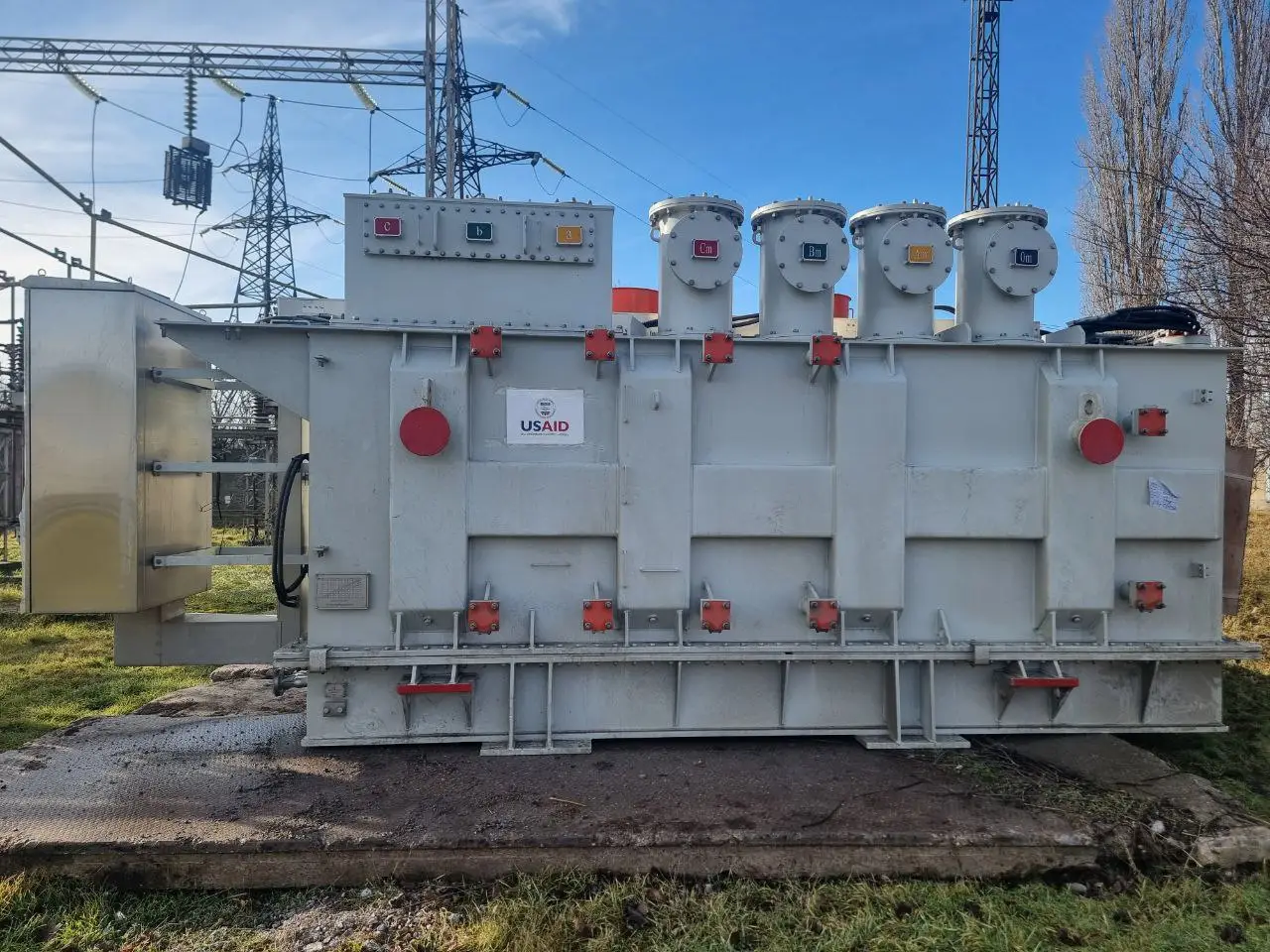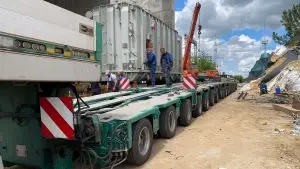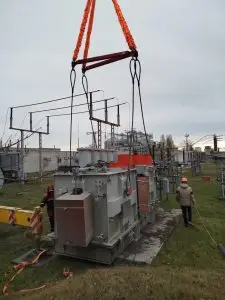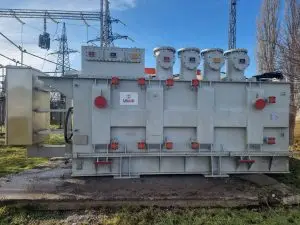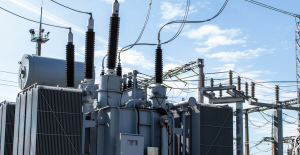Background
Amid Ukraine’s ongoing effort to modernize and stabilize its national power grid infrastructure—especially in the face of geopolitical and environmental challenges—the Ukrainian National Grid Operator commissioned a strategic project aimed at increasing transformer capacity and reliability across key substations. The objective was to ensure high-voltage energy stability and distribution in regions experiencing increased load demand and network volatility.
Our Role
This EPC project was executed in partnership with German engineering teams, with our scope covering the complete engineering, procurement, and delivery of seven large-scale power transformers, varying in output from 125 MVA to 250 MVA, across three voltage levels (330 kV, 220 kV, and 35 kV). These transformers were critical to ensuring redundancy, managing peak demand, and enhancing the stability of long-distance transmission.
Key project phases included:
- Engineering design and technical validation based on Ukrainian network specifications
- Manufacturing supervision and quality assurance
- Coordination with German and Ukrainian regulatory standards
- Transportation and delivery to multiple substations across Ukraine
- On-site installation guidance and testing procedures
Technical Highlights
- Transformer Count: 7 units
- Rated Capacity Range: 125 MVA – 250 MVA
- Voltage Levels: Multi-voltage capability at 330 kV, 220 kV, and 35 kV
- Cooling System: OFAF (Oil Forced Air Forced)
- Protection Features: Integrated digital relay systems, Buchholz relay, and temperature control
- Design Standard: IEC-compliant with adaptations to Ukrainian regulatory codes
Outcome
The successful delivery of this project in a multi-year phased approach played a vital role in bolstering Ukraine’s grid reliability during a critical time. Despite logistical challenges due to regional instability, the transformers were delivered on schedule and integrated into the grid without delays. The project has since contributed to:
- Increased power resilience in key transmission corridors
- Reduced risk of regional outages
- Improved energy flow and load distribution
- Enhanced capability to integrate future renewable energy sources

